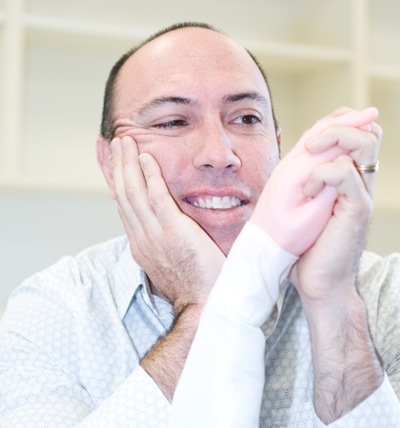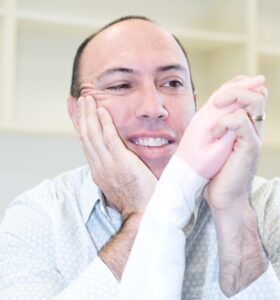Neuroscience was clearly my favourite course at uni – I loved it so much I was learning for fun, not for exams. I don’t recall ever studying for a neuroscience exam – it all seemed to magically stick in there – as if there were tailored docking stations in my brain just waiting for their particular neuroscience nugget to lock in. I found it fascinating. At once unbelievably complex and elegantly simple. I loved other subjects too – anything about how humans actually worked – biology, psychology, beerology – but neuroscience turned me on the most.
Fast forward to working in a busy sports and manual therapy practice, and with a chronic pain management programme. This was about twenty years ago. ‘Pain education’ (the gate control theory with some trimmings) had spent some time in the sun but was a bit on the nose because, as Fordyce said, ‘education to behaviour change is like spaghetti to a brick’. The evidence was gathering that ‘back schools’ were at best useless and at worst iatrogenic. The biopsychosocial model was gaining serious traction and multidisciplinary pain management programmes, applying cognitive-behavioural principles, were considered the ‘gold standard’ in chronic pain management. In the midst of all this, the most rewarding clinical experiences I was having involved me carefully explaining to someone, and using my clinical skills to convince them, how we thought the system worked. We could explain, on the basis of solid science, even way back in those times, that even though their pain is brutal, distressing and 100% bona fide real, and it feels like their body is broken and about to explode, crumble or slip out, that there are biological processes that can make that happen. When they would ‘get it’, I could watch as they slowly changed the course of their own rehab in response to their new understanding. It seemed to me at the time that it was the most effective thing I could do. I went searching for the evidence and came up blank. Worse than blank perhaps.
One of my jobs was to conduct exit interviews for people who had completed a ‘gold standard’ CBT-based pain management programme. A very common conversation went like this:
LM: How was the programme?
Participant: It was really very good. The staff are lovely. Jane the physiotherapist makes very nice brownies! I was so proud of Dimos – the way he has improved on the treadmill, and Andy on the stair climbing – he is doing real well…. (pause)………I mean the programme was not really for me, because I have real pain.
In one 6-month period, this startling reflection was volunteered by over 50% of everyone I interviewed! They had just spent 3 – 4 weeks, 8 hours a day, thinking that everyone else in the programme thought they had pain when really they didn’t (because why would they be doing a psychology programme if their pain was real?), and that they themselves were in the programme by mistake because they knew that their pain was completely real. When I suggested that many others felt the same way and questioned why do they think they are alone in having real pain, they would say ‘I know my pain is real because I can feel it’.
These experiences fanned the fire of me wanting people to actually understand how and why they can be in horrible pain yet not in horrible danger. I realized then that my clinically uplifting experiences, which were more or less Explaining Pain, might actually be a useful thing to do, if we could do it really well, even though the literature was not very positive. Or so it seemed. Serendipity would have it that about this time I turned up at a conference to listen to this fellow called Dave Butler. A larrikin for sure. He swore in conference lectures. He wore rather un-physiotherapist clothing. The main things I remember now about that lecture are: it was funny, provocative, sensible, fascinating and unpopular. It was imploring us to consider things above the foramen magnum. I was hooked and inspired.
Dave and I had been on a pretty similar journey so it turned out – he much more accomplished and knowledgeable than I. So, I set out to become more knowledgeable – going to a five day course with Dave and Louis Gifford and reading my guts out, shouting pain physiologists to lunch, having peppermint tea with pain psychologists and wine with anaesthetists, and two years later I started my first ever randomized controlled trial of Explaining Pain. I trained people up and tricked the control group clinicians into thinking that they were the active group. Assessors were blinded. Patients were blinded to which treatment was actually on trial. The results, on pain and disability, were encouraging. We did more RCTs and some experiments. Once the data were in and clearly positive, I teamed up with Dave to write the book – Explain Pain, now in its second edition. I had no interest in writing the book before the idea had been properly tested – that seems a bit naughty to me.
Now, over 15 years later, it is time to take stock of what has become a new field – Explaining Pain. In our recent perspectives piece available pre-publication in the Journal of Pain, David and I reflect on the journey that Explaining Pain (EP) has made from pretty humble beginnings to being cited in evidence-based guidelines around the world. There are top notch research groups on each continent innovating with EP and testing it and YouTube, Twitter and Facebook all have a sprinkling of EP-type things. In our paper, Dave and I describe the theoretical grounding of EP, the common misconceptions of EP, the behavioural evidence to support EP including a systematic review of new literature, the limitations of EP, the rip-offs and the replicas, and the challenges we all face in implementing EP strategies. Finally, we make suggestions for where the field might head next. In the next few posts, I will cover some of these aspects, drawing heavily on the paper. You could just read the paper instead, by going here 15 Years of Explaining Pain – The Past, Present and Future or downloading the pre-publication PDF.
Read the second part in this series of blog posts here.
About Lorimer Moseley
Professor Lorimer Moseley is a clinical scientist investigating pain in humans. After posts at The University of Oxford, UK, and the University of Sydney, Lorimer was appointed Foundation Professor of Clinical Neuroscience and Chair in Physiotherapy, The Sansom Institute for Health Research at the University of South Australia. He is also Senior Principal Research Fellow at NeuRA and an NHMRC Principal Research Fellow.
He has published 190 papers, four books and numerous book chapters. He has given over 120 keynote or invited presentations at interdisciplinary meetings in 26 countries and has provided professional education in pain sciences to over 9000 medical and health practitioners. He consults to governmental and industry bodies in Europe and North America on pain-related issues. He was awarded the inaugural Ulf Lindblom Award for the outstanding mid-career clinical scientist working in a pain-related field by the International Association for the Study of Pain, was runner-up for the Australian Science Minister’s Prize for Life Sciences, and won the 2013 Marshall & Warren Award from the NHMRC, for the Best Innovative and Potentially Transformative Project.
Link to Lorimer’s published research here. Downloadable PDFs here.
Reference
Moseley, G., & Butler, D. (2015). 15 Years of Explaining Pain – The Past, Present and Future The Journal of Pain DOI: 10.1016/j.jpain.2015.05.005




